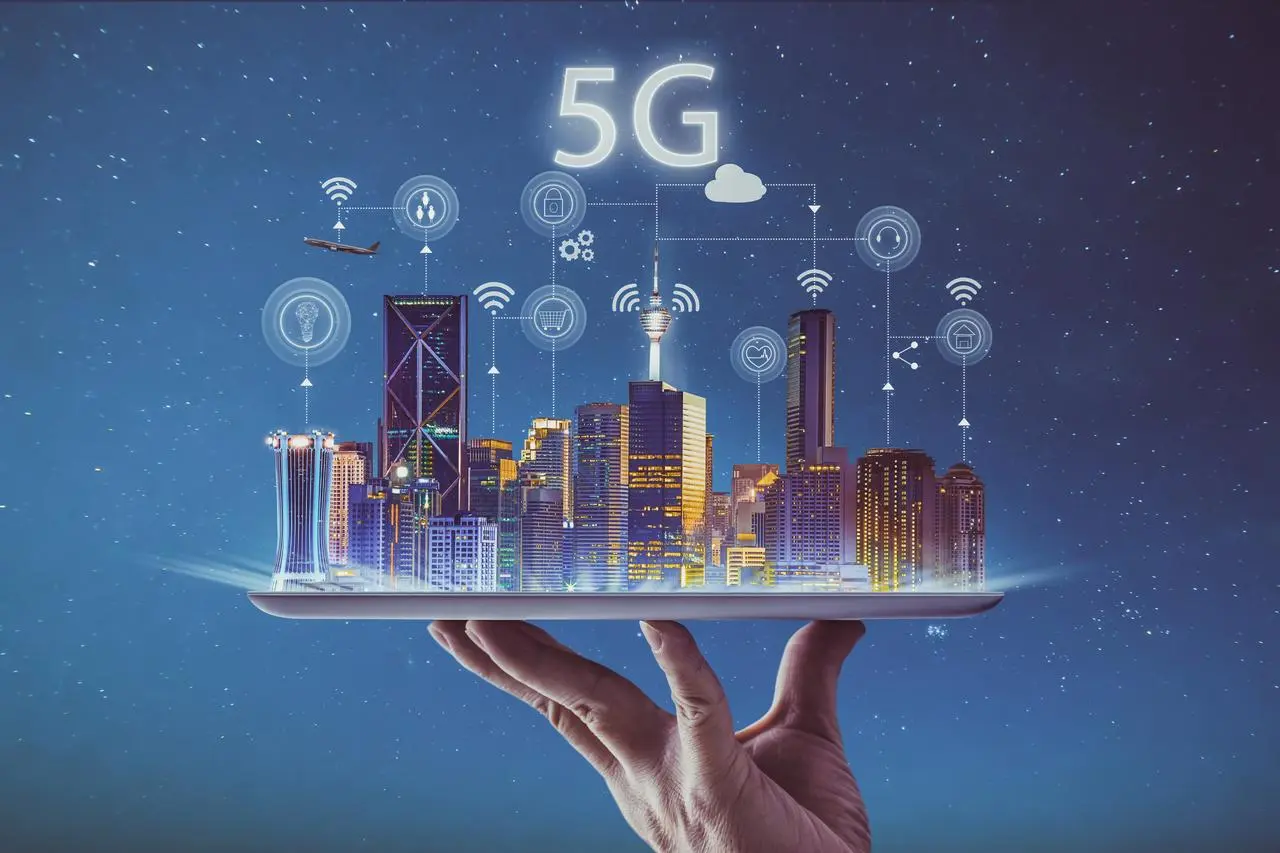The rollout of 5G technology is one of the most significant advancements in global connectivity. By 2025, 5G networks are reshaping industries, transforming digital experiences, and paving the way for innovations that were once considered science fiction. With ultra-fast speeds, near-zero latency, and massive device connectivity, 5G is not just about faster internet—it is about enabling a new digital ecosystem.
This article explores what 5G is, its benefits, applications across industries, challenges, and the future it promises.
What is 5G?
5G is the fifth generation of mobile network technology, designed to deliver faster speeds, more reliability, and support for billions of connected devices.
- Speed: Up to 100 times faster than 4G.
- Latency: Less than 1 millisecond, enabling real-time interactions.
- Capacity: Supports millions of devices per square kilometer.
Benefits of 5G Connectivity
1. Ultra-Fast Internet
With download speeds up to 10 Gbps, 5G enables seamless streaming, instant downloads, and high-quality video conferencing.
2. Low Latency
Critical for applications like remote surgery, autonomous driving, and real-time gaming.
3. Enhanced Device Connectivity
Supports the Internet of Things (IoT), connecting billions of smart devices simultaneously.
4. Energy Efficiency
5G networks consume less power per bit, supporting greener technology adoption.
Real-World Applications of 5G
1. Smart Cities
5G powers smart traffic systems, connected infrastructure, and real-time city monitoring.
- Example: Intelligent streetlights that adjust brightness based on traffic.
2. Healthcare
Doctors can perform remote surgeries using robotic systems connected via 5G.
- Impact: Life-saving procedures for patients in remote areas.
3. Autonomous Vehicles
Self-driving cars rely on 5G to exchange data instantly with other vehicles and traffic systems.
- Impact: Safer, more efficient transportation.
4. Entertainment and Gaming
5G enables cloud gaming, AR/VR experiences, and 8K streaming without lag.
- Example: Gamers can play high-performance titles on mobile devices via cloud platforms.
5. Industry 4.0
Factories use 5G-powered IoT devices for automation, predictive maintenance, and robotics.
- Impact: Increased productivity and reduced downtime.
6. Education
Students can engage in immersive learning experiences through AR/VR classrooms powered by 5G.
Challenges of 5G Adoption
- Infrastructure Costs – Building 5G networks requires massive investments.
- Coverage Gaps – Rural areas may lag behind in 5G access.
- Security Concerns – More devices connected means more cyberattack risks.
- Health and Environmental Concerns – Public debates continue, though no proven health risks exist.
The Future of 5G and Beyond
- 6G Development: Research is already underway for 6G, expected by 2030.
- Global Adoption: By 2030, most urban areas will have full 5G coverage.
- Integration with AI & Blockchain: 5G will enable faster AI computations and secure blockchain-powered IoT networks.
- Metaverse Connectivity: 5G will provide the backbone for large-scale virtual worlds.
Conclusion
5G is more than just a network upgrade—it is the foundation for the next generation of digital innovation. From healthcare and transportation to gaming and education, industries are being transformed by its speed, reliability, and connectivity. While challenges remain, the future of 5G promises a hyper-connected world where technology seamlessly integrates into everyday life.
SEO Keywords: 5G technology 2025, future of connectivity, 5G applications, IoT and 5G, 5G in healthcare, smart cities 5G, benefits of 5G.
